SEO can feel like an expensive game reserved for big brands with deep pockets, but it doesn’t have to be.
I’ve worked with scrappy startups, solo founders, and lean teams who’ve grown their organic traffic without burning through their budgets, and I’m here to show you how.
Whether you’ve got $100 a month or you're bootstrapping with zero spend, the truth is: smart strategy beats brute force every time. In this guide,
I’ll break down the exact tactics, tools, and mindset shifts you need to make SEO work for you—without compromising on quality or getting trapped in shady shortcuts.
The importance of setting a budget for SEO
I’ve found that not setting a clear SEO budget is one of the fastest ways to end up frustrated, burnt out, and buried on page 7 of Google.
Without a budget, whether it's $200 or $2,000, it’s impossible to prioritize effectively, and everything starts to feel reactive instead of strategic.
The thing is, SEO isn’t a plug-and-play solution. It’s an ongoing, long-term investment that needs consistent fuel.
Having a clear SEO budget helps guide the actions you need to take.
A well-defined budget gives structure to your strategy. It keeps you from pouring everything into content while neglecting crucial technical fixes, or overpaying for tools you don’t even use.
It also forces you to focus on what moves the needle, what generates real traffic, and what actually helps people.
Plus, when you know exactly what you're working with, it’s easier to plan ahead, adapt when algorithms shift, and track what’s delivering ROI. Your SEO budget anchors your strategy and empowers smarter decisions every step of the way.
Related: What is SEO and why is it worth your time?
Understanding the true cost of SEO
1. The difference between cheap and cost-effective
There’s a big difference between stretching your budget and settling for cut-rate work. I’ve learned that effective SEO isn’t about finding the cheapest provider. It’s about investing in the right combination of time, expertise, and strategic execution.
A well-structured, cost-conscious SEO plan considers what actually drives growth: thoughtful keyword research, technical site health, high-quality content, and ethical link-building. All of these require skill and patience, not shortcuts.
If someone’s charging rock-bottom rates, chances are they’re either rushing through tasks or automating them with minimal oversight, neither of which builds sustainable results.
What you really pay for in SEO is a mix of deep experience and the time it takes to do things properly.
A consultant or agency that charges more may, ironically, save you money long-term by getting things right the first go. Cheap services often lack nuance. They don’t think about how user intent aligns with content, or whether your backlink profile actually builds domain authority.
And while the upfront savings can feel like a win, low-quality SEO almost always ends up costing more to fix. Whether it's tanked rankings or lost trust, cutting corners is just a detour to disappointment.
2. The hidden costs of “$99/month” offers
It’s tempting to believe those $99/month SEO packages are a steal, but the truth is, affordable monthly SEO plans often deliver far less than promised, and sometimes, they do real damage.
You’ll see language like “guaranteed rankings” or “page-one results,” but dig a little deeper and you’ll notice they rarely specify which rankings, or how they plan to achieve them.
These packages are usually stuffed with generic tactics, low-effort backlinks, and automated reports that look flashy but don’t actually move the needle. Worse, they rely on black-hat strategies that may offer a short-term bump, but can easily lead to manual penalties from Google.
Always question the methodology of the cheap SEO services being pitched to you.
I mean, the idea that you’re getting 100 backlinks for $50 sounds or receiving 100 blog posts in under a week for $200 is really tempting. But you’ll need to consider what it’ll take them to provide you with these.
100 backlinks for $50 reads mass spamming your site with low quality backlinks. And receiving 100 blog posts in under a week for $200 just sounds like a facade of low-quality content generated at scale with AI.
Even keyword targeting in these plans is often smoke and mirrors.
I've seen businesses rank for their own brand names or hyper-specific, low-volume terms that bring in no real traffic. It’s not that they didn’t get to “page one”, it’s that it didn’t matter.
These kinds of tactics check a box without adding value, and they leave you with little to build on later. Real SEO is about helping the right people find you at the right time. It can be lean, sure, but it should never be lazy.
Prioritize foundational work first
1. Start with a one-time technical SEO audit
Every successful SEO strategy I've ever worked on started by getting the technical house in order. It's easy to overlook the backend details when you're chasing rankings, but things like sluggish load times, missing meta descriptions, and poor site structure can quietly sabotage your entire effort.
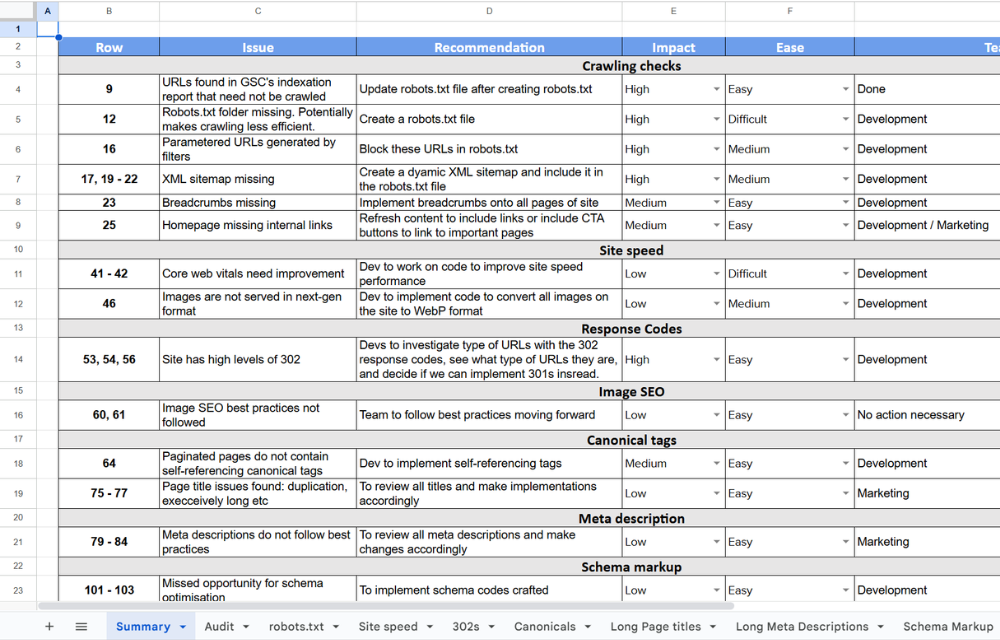
A solid technical audit shines a light on issues that might be invisible to users but glaringly obvious to search engines.
At a minimum, you’ll want to review your core web vitals, check for broken internal links, confirm that your canonical tags are properly set, and make sure your metadata actually reflects what’s on each page.
For WordPress and other CMS platforms, there’s even more under the hood that needs attention.
Outdated plugins, bloated themes, and messy redirects can slow your site down or trigger crawl errors that drag down rankings.
In my experience, some of the biggest wins have come from simple changes, like consolidating duplicate content or removing auto-generated archive pages that added no value.
The goal isn’t to obsess over every technical detail but to clear the path so your content and user experience can shine. It’s not the most interesting work, but it’s the kind that pays off quietly and consistently.
2. Invest in quality keyword research
If I could only spend a budget on one SEO activity, I’d put it into keyword research without hesitation.
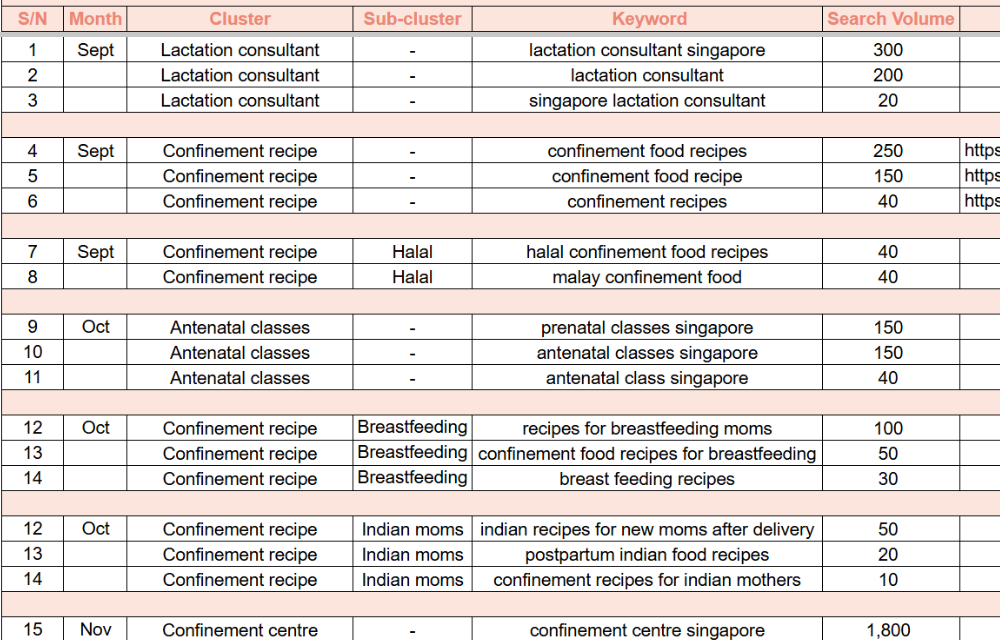
A well-researched keyword strategy is like a blueprint because it tells you what your audience is actively looking for.
Without it, you're basically throwing content into the void and hoping someone stumbles across it.
Great keyword data reveals where the opportunity lies, what your competitors are missing, and which search intents are underserved. More importantly, it gives you clarity. You stop writing for everyone and start writing for the people who actually want what you offer.
The other reason I prioritize this step is because of how easily it fuels DIY efforts.
Once I’ve got a keyword map, I can start optimizing existing pages, updating meta descriptions, and planning blog content - all in-house.
Professional audits take it even further by mapping keywords to existing content, spotting gaps you didn’t know were there, and flagging low-hanging fruit with high potential.
When you’ve got limited resources, you can’t afford to guess. Good keyword research means every word you publish is working toward a goal, not just filling up your website.
DIY-friendly SEO tactics that deliver results
1. Optimize existing pages with on-page best practices
Before publishing anything new, I make it a habit to comb through the pages I already have.
Most of the time, they're not underperforming because the content is bad. It’s usually because they’re missing basic on-page elements that search engines need to understand what’s there.
I’ll start by checking header structure. If the page is using multiple H1s or skipping straight from H1 to H4, that’s a signal to clean it up. Consistent, semantic use of H1s, H2s, and H3s not only helps Google crawl more efficiently but also improves readability for humans.
From there, I’ll make sure each page includes clear calls to action that guide users toward their next step, whether that’s filling out a form or exploring more content.
Internal linking is one of those small tweaks that delivers outsized value.
By strategically linking to related blog posts, service pages, or key landing spots, I give users more pathways to stay engaged and help distribute authority throughout the site.
Structured data, like schema markup, is also worth adding, especially if you’re publishing FAQs, reviews, or events.
These tags give Google extra context, and sometimes that results in enhanced visibility through rich snippets. It doesn’t take a huge budget to make these fixes; it just takes attention to detail and a few good hours of focused effort.
2. Create helpful, original content
Helpful content is the line between content that performs and content that collects dust. I always start with the question: what does the reader actually want from this page?
Not what I want to rank for, but what they need answered.
That shift in thinking forces me to go deeper than just slapping keywords into subheadings. Instead, I focus on context, clarity, and usefulness.
I’ll bring in my personal experiences, break down complex ideas, and inject a point of view that AI tools can’t replicate. Sure, I’ll use tools to outline or organize, but the voice and insights? That has to come from me.
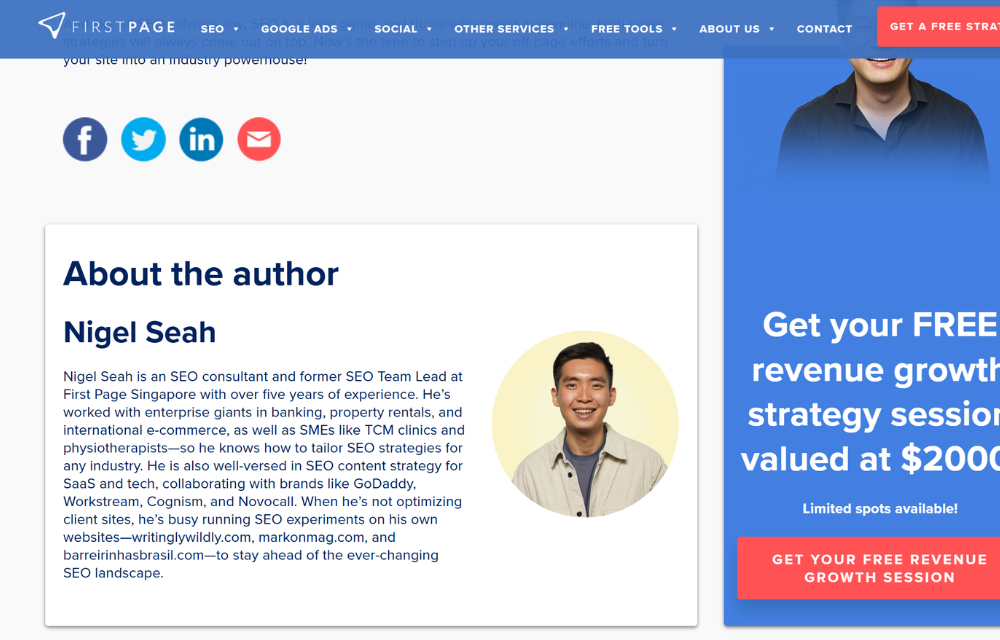
Adding an author bio, citing my sources, and being transparent about how I reached a conclusion all help build trust, both with my audience and with search engines.
That’s E-E-A-T in action. If I’ve worked in the industry, I’ll say it. If I’ve tested a method myself, I’ll show the results. I don’t need to sound like a professor to demonstrate expertise; I just need to be specific, honest, and human.
It’s about writing better, and putting content out there that genuinely helps someone solve a problem.
3. Implement basic local SEO
If you’ve got a physical location, or even if you’re a service business operating within a specific region, local SEO is your not-so-secret weapon.
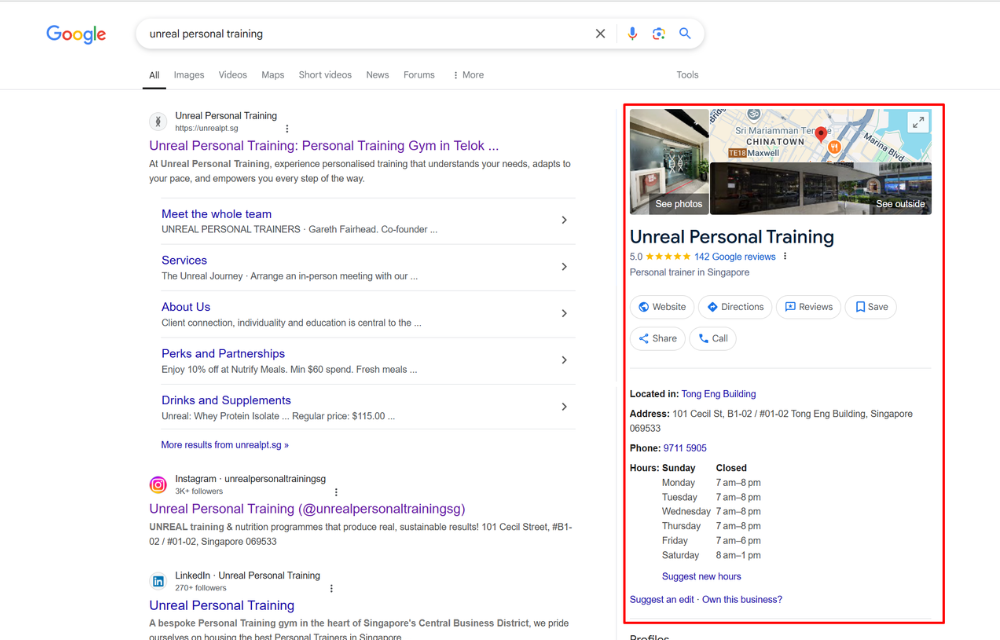
I always start with the basics: claiming and properly filling out a Google Business Profile (GBP). It blows my mind how many businesses skip this or leave it half-done.
Once that profile’s optimized with accurate hours, a compelling description, categories, and some high-quality photos, it becomes a real traffic magnet, especially for people searching “near me” or on mobile. It’s one of the easiest wins you can get with little to no spend.
Consistency is the name of the game when it comes to your NAP - name, address, and phone number - across directories.
I’ve gone down rabbit holes trying to clean up inconsistent listings, and let me tell you, those little discrepancies confuse both users and search engines.
Local citations on relevant, trusted directories add credibility, while city-specific landing pages help you rank in more than just your main location.
These don’t need to be complex, just useful, targeted, and personalized to the audience in that region. Done right, local SEO helps you stand out right where it counts.
Tools & resources that won’t break the bank
Free & low-cost SEO tools
1. Google Search Console
Google Search Console has become my go-to for understanding what’s actually happening beneath the surface of a website.
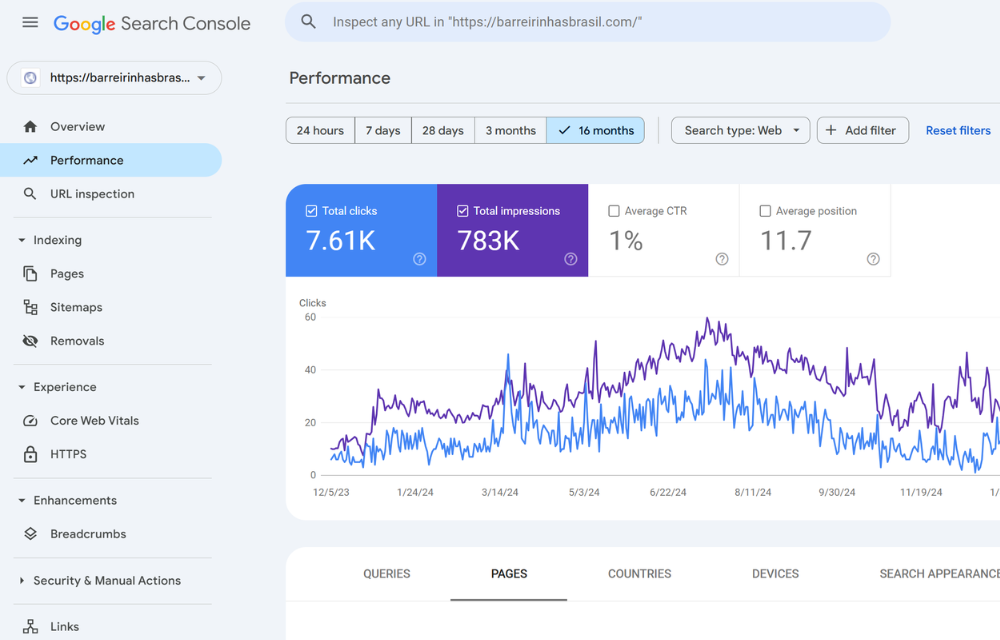
It tells me how pages are performing in search, flags indexing issues, and shows what queries are driving clicks.
What makes it so valuable isn’t just the volume of data, but that it comes straight from Google. No guesswork, no projections.
Just raw insights into how your site appears and behaves in search. I use it constantly to check crawl stats, mobile usability, and see which pages are slowly climbing the rankings.
It’s also one of the best tools for diagnosing pain points.
If a page is getting impressions but not clicks, it’s usually a cue to tweak titles or meta descriptions. If Google isn't indexing something you expected to rank, Search Console will show you why.
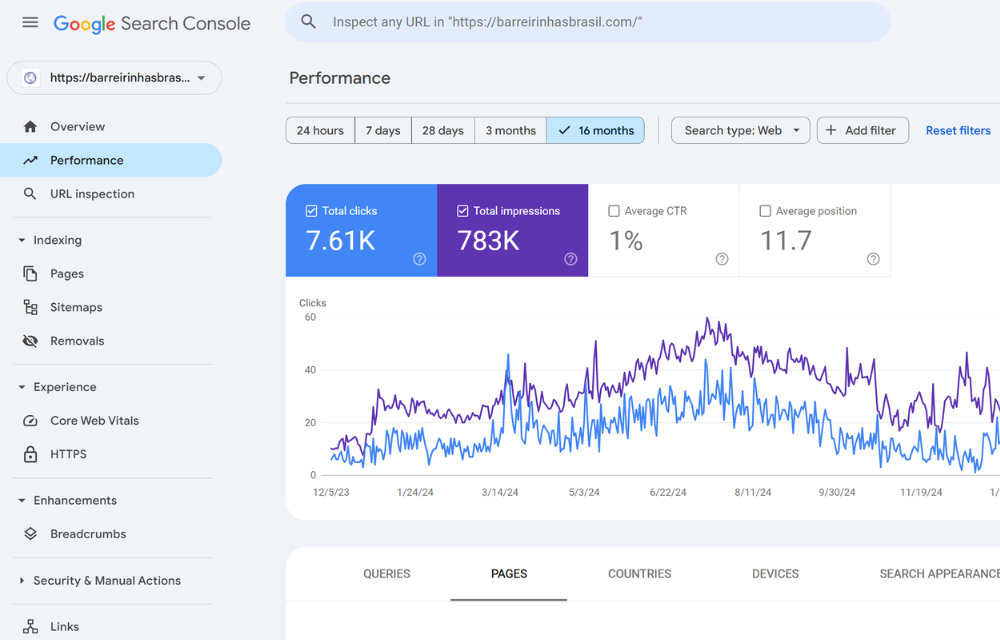
And if I need quick insights to which pages of my site aren’t being indexed and why, the coverage report is all I need.
I don’t need it to do everything, just to do the important things well. And the fact that it’s completely free? That makes it a no-brainer addition to any SEO toolkit, especially if you're running things solo or on a lean budget.
2. Ubersuggest
Ubersuggest is like having a stripped-down, user-friendly version of the enterprise-level tools—only it doesn’t require a credit card the size of your arm.
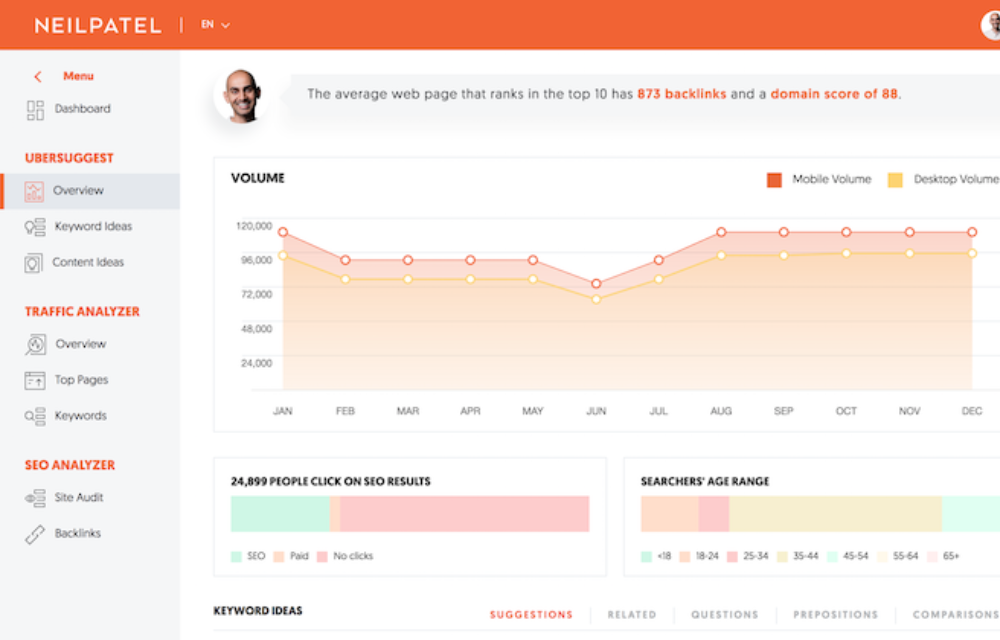
I use it primarily for keyword research and competitive analysis. Within seconds, I can pull up search volume, SEO difficulty, and content ideas based on what’s trending in my niche. For small businesses or solopreneurs, it’s more than enough to build a lean content plan without getting lost in data overload.
What I like most is how approachable it is. The dashboard’s not cluttered, the filters make sense, and you can export keyword lists or backlink reports with a few clicks.
While the free tier has its limits, the low-cost paid plans unlock some seriously helpful features without pushing you into triple-digit monthly spend. It’s one of those rare tools where I don’t feel like I’m paying for fluff. I’m paying for clarity, and it delivers that consistently.
3. Screaming Frog (Lite)
Screaming Frog’s free version has saved me more hours than I can count. It crawls your site like a search engine would and spits out everything from broken links to missing title tags in a matter of minutes.
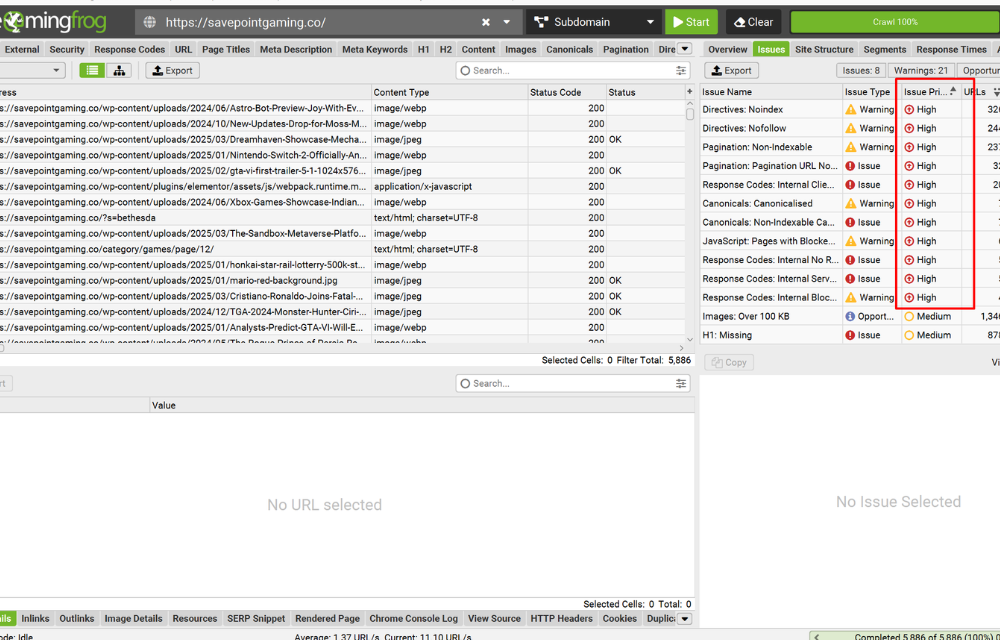
The interface might look intimidating at first glance, but once you get the hang of it, it becomes an insanely powerful tool for quick audits.
It even lists the issues in order of priority for you!
I’ll usually run a crawl before making any big site changes to catch issues I’d otherwise miss, especially duplicate content or 404 errors lurking deep in the site structure.
Even with the crawl limit in the free version, I’ve been able to audit full sites by focusing on high-priority pages first. It's like having a technical SEO assistant that quietly does the heavy lifting in the background.
You don’t need to be a developer to use it effectively either. As long as you know what you're looking for, bad redirects, missing metadata, slow-loading pages, you can turn that crawl data into a clear to-do list and start fixing issues that are holding your rankings back.
Keyword Surfer
Keyword Surfer lives in my browser, and I love that it works right inside the search results. I don’t have to jump between tabs or log into a separate platform - just run a Google search, and it overlays volume and related keyword ideas right there on the page.
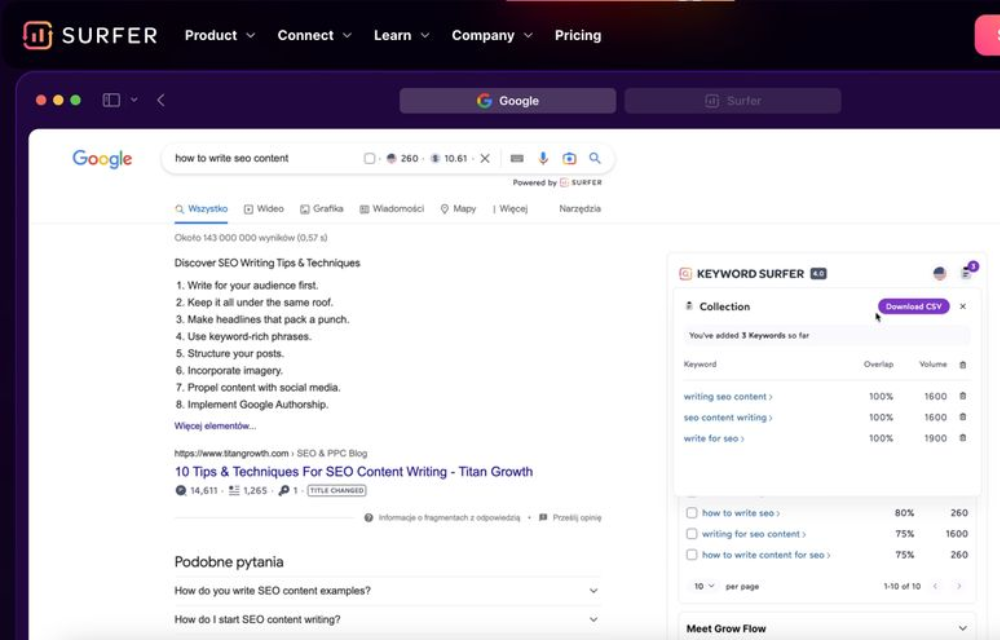
For anyone trying to write smarter, more targeted content without overthinking it, this plugin is gold. It makes quick keyword validation part of my natural workflow, not a separate task that eats up half my day.
What I find most helpful is how it highlights correlations in real-time. If I’m researching blog topics or product pages, I can see which terms competitors are targeting and how much search demand there really is.
That context lets me shape content that’s relevant, realistic, and rooted in actual user behavior. It’s a lightweight tool, but don’t let that fool you. It’s deceptively powerful and absolutely perfect for budget-conscious creators who want data without the drag.
Related: How to create amazing SEO-optimized content?
Learning resources to build in-souse skills
1. Ahrefs certification
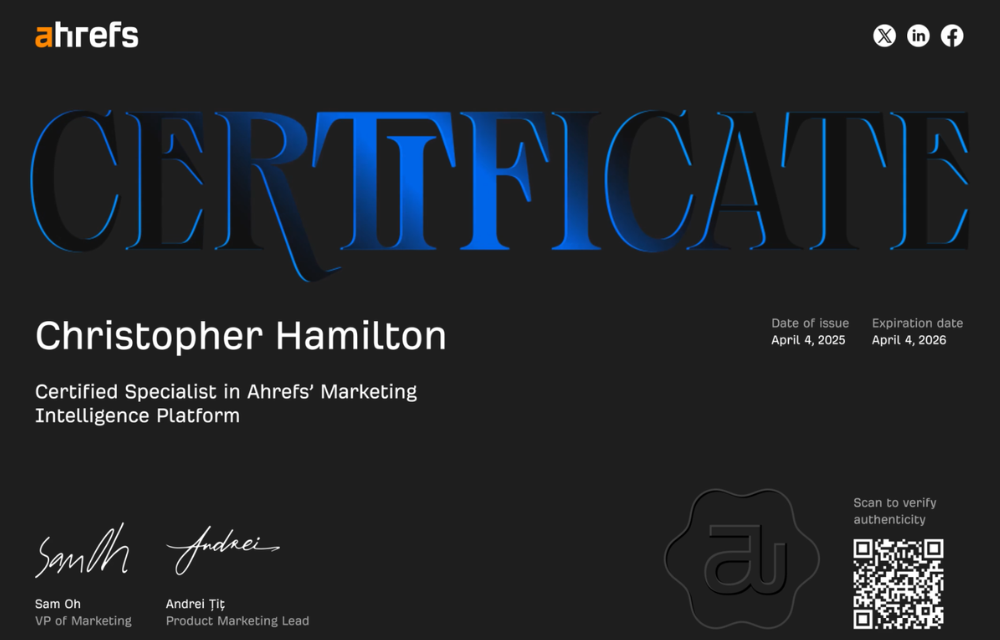
If you’re serious about upskilling without burning through your budget, the Ahrefs Certification is a no-brainer.
It cuts through the noise and gives you a grounded understanding of SEO fundamentals without feeling like you’re stuck in a theory bubble. I appreciated how practical the modules were; they weren’t just showing tools, they were teaching thinking.
Whether you’re new to SEO or brushing up on weak spots, this course gives you the confidence to approach your strategy with intention, backed by data and real-world tactics.
GoDaddy’s SEO Blog
GoDaddy’s SEO blog is underrated, especially for small business owners trying to navigate search without an in-house expert on speed dial.
The content is written in plain English, which is refreshing in a space full of jargon-laced articles. I’ve found their step-by-step tutorials to be especially helpful for getting the basics right—things like optimizing local listings or improving site speed on budget platforms.
It’s less about high-level theory and more about what you can do right now with the tools you already have.
Ahrefs’s SEO blog
I have a soft spot for this blog. Its resources were what I started my SEO journey with when I was still at my first job 5 years ago.
There’s a reason the Ahrefs blog has such a cult following.
It’s one of those resources I keep coming back to—not because I forget things, but because they constantly push the conversation forward.
The deep dives are incredibly detailed, but somehow still approachable. I’ve used their guides to audit pages, reverse-engineer competitor strategies, and understand how updates actually impact rankings in the wild.
Whether I’m researching a new tactic or validating something I’ve already done, it’s one of the few blogs I genuinely trust to give me more than surface-level advice.
First Page Digital Singapore blog
Call me biased if you will (I used to work here), but some of the content on the First Page Digital Singapore Blog is among some of the best put out by agencies. And I’m not tooting my own horn by praising my own publications.
Reading the First Page Digital blog feels like getting advice from a local mentor who actually understands the nuances of SEO in Southeast Asia.
Their posts don’t just explain what SEO is—they break down how to apply it specifically in the Singaporean market, which makes it incredibly relevant for both regional and international businesses.
Some of the best articles include:
- Blog SEO 101: Optimising Your Blog for Rankings & AI Overviews
- Google Ranking Drop & Google Penalties: Solving The Mystery
- How To Track Form Submissions On GA4 And Google Tag Manager
- A Comprehensive Website Migration Checklist
- SEO Agency versus In-House SEO: Which Is Better for Your Business?
- Is My SEO Agency Playing Me?
- The Importance of Account Managers (From The Perspective Of A Technical Specialist)
Strategic budget allocation tips
1. When to choose one-off services over monthly retainers
I’ve worked with businesses that poured thousands into retainers without a clear strategy and watched them walk away with a few blog posts and vague reports.
That’s why if you're working with a limited budget, going the one-off route can be a smarter play. Technical SEO audits are a great place to start.
One deep dive into your site’s structure, speed, and crawlability can uncover issues holding you back from ranking, and it gives you a list of fixes that can be tackled gradually or internally.
You don’t need to be locked into a long-term commitment to see real value. Just get a clear roadmap, implement it well, and you’re already ahead of the game.
I’ve also seen one-off keyword strategy sessions outperform months of scattered content creation. By investing in targeted research upfront, you set the foundation for everything else - on-page optimization, content planning, even future ad campaigns.
The same goes for local SEO setup. Claiming your Google Business Profile, fixing NAP consistency, and building local citations can all be handled in one focused sprint. These foundational tasks don’t need to be ongoing unless you’ve got the resources to scale aggressively.
Otherwise, handle them well once, and you can maintain them with minimal cost over time.
2. Setting realistic goals and timelines
SEO is not the kind of investment that delivers next-day returns. That’s exactly why you need to go into it with clear expectations. I like to start by framing ROI in terms of lifetime value, not just traffic spikes or quick leads.
One high-intent organic visitor who becomes a long-term customer is worth exponentially more than dozens of low-converting clicks. So, I shift the conversation away from vanity metrics and toward business impact: are we attracting the right audience, and are they doing what matters once they land on the site?
Understanding the timeline is also crucial. I’ve seen meaningful results within four months on some projects, but others take closer to a year, especially in competitive spaces or on newer domains.
That lag isn’t failure; it’s just how SEO works. Google doesn’t hand out trust easily, and rightfully so. The key is to monitor progress along the way, looking at things like improved rankings, more impressions, and better user behavior metrics.
When you set realistic goals, it’s easier to stay focused, stay patient, and keep optimizing without falling for shortcuts that cost more in the long run.
3. Avoiding SEO scams and red flags
It’s wild how many SEO services still promise “guaranteed #1 rankings” or instant traffic boosts.
That kind of language always sets off alarms for me. The reality is, no one—not even the best agency on the planet—can guarantee rankings in an algorithm they don’t control.
What usually follows those big promises is a mix of outdated tactics, shady link schemes, or reporting that looks impressive but hides the lack of real progress.
Demand transparency from SEO service providers to avoid being scammed.
If a provider can’t clearly explain what you’re paying for each month, chances are you’re not getting much beyond a pretty PDF and some smoke and mirrors.
Granted, depending on the industry and country the client is operating in, you sort of can get quick results if you get your basics right. SEO for certain industries in specific countries can be less competitive.
That said, you should always ask three questions before working with anyone on SEO:
- Who’s doing the work?
- How are they doing ?
- Why have they chosen that approach?
If they can’t walk you through their content strategy, or if they dodge questions about authorship and link-building methods, walk away.
Transparency is the baseline for trust.
Good SEO is slow, steady, and backed by thoughtful reasoning, not flashy guarantees. So if it sounds too good to be true, it probably is—and in this space, that can mean penalties, wasted money, or worse, damage to your domain you’ll spend months undoing.
4. Think long-term, build smart
If there’s one thing I’ve learned, it’s that SEO doesn’t have to drain your bank account to deliver real results, but it does require intention.
We’ve covered the essential moves: start with a solid foundation through audits and keyword research, take advantage of DIY-friendly tactics, lean on budget-friendly tools, and avoid the red flags that waste time and money.
SEO isn’t free, and it shouldn’t be. However, by investing in the right areas at the right time, you can make every dollar count. Set smart goals, build out your strategy piece by piece, and once the foundation’s in place, you’ll have the freedom to scale with confidence and clarity.









